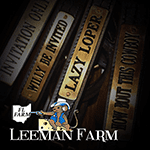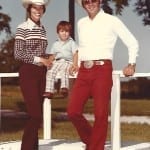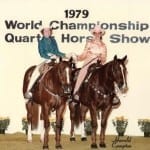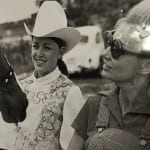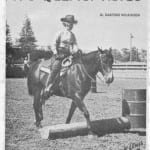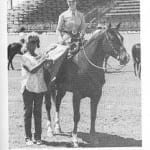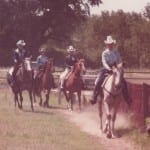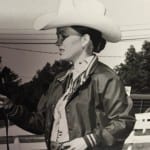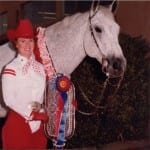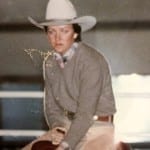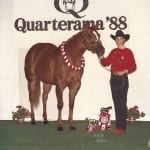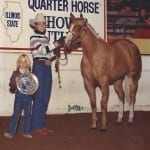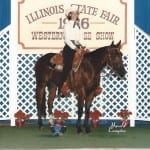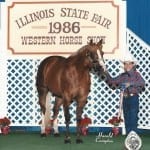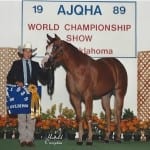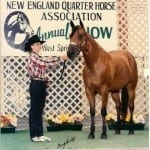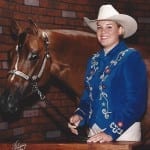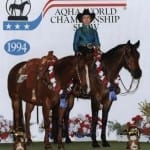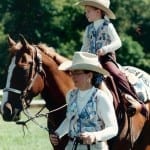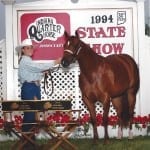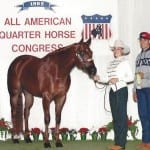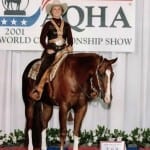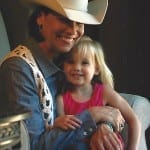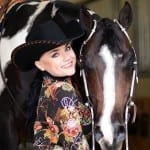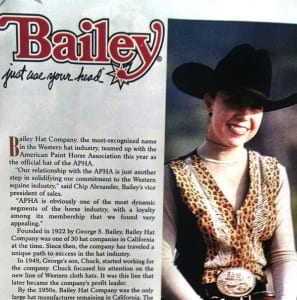A look back at how the styles have changed in the show pen throughout the decades…
Many judges have noted that one of the first things they notice about an exhibitor is well… their hat.
And while much has been written about how the cowboy hat came to be, and the part it has played in movies and TV shows, not much is out there about the history of hats in the show pen.
GoHorseShow decided to investigate this history and reached out to both exhibitors and professional Hatters to give us the lowdown on how hat styles have evolved throughout the years.
But before we take a stroll down memory lane, it is worth noting that everyone we spoke with stressed how personal one’s hat is.
In fact, there’s even an old code of the West that says: “Don’t try on another man’s hat. It’s almost as bad as getting on his horse.”
Cynthia Cantleberry of Golden Hill Farm in California said, “No matter what the (current) style is, people still tend to somewhat stick with what they really like. That’s what it really boils down to.”
Past AQHA President Johne Dobbs agreed; adding, “Creasing a Western hat is so personal nowadays. It is really about what looks good on you.”
Hatter Burl Flanigan of Flanigan’s Cowboy Stuff in Clements, California, has been shaping hats for exhibitors for 46 years concurred, “Depending on the shape of the person’s face, the style needs to be adjusted. For example, a person with a rounder face generally looks better with a little wider brim. Whereas a wide brimmed hat will drown a thinner faced person.”
It is also worth noting that everyone we interviewed mentioned that hat style (especially before the days of World Shows and the Internet) can, and generally does, vary slightly depending on region and discipline.
Now back to memory lane…
The 60s and 70s
Ah, the 60s… a time of peace, love and… flat crowns? Well, just like anything in the 60s, times changed fast, but for a time, at least flat crowns were rather popular.
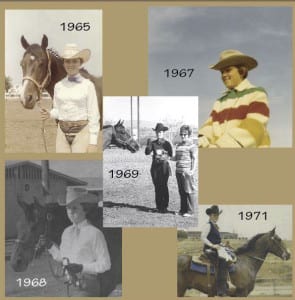 “The fairly flat crowns with the wider brims were popular up until about 1968-69 when the taller crowned hats started taking over,” said Robin Ferrer, who showed AQHA on the west coast during this time. “Hoss Cartwright (from Bonanza) was a big inspiration for that. People like Nancy Weiss, Shelley Ewing, and Benny Guitron were the first ones I knew who wore that style.”
“The fairly flat crowns with the wider brims were popular up until about 1968-69 when the taller crowned hats started taking over,” said Robin Ferrer, who showed AQHA on the west coast during this time. “Hoss Cartwright (from Bonanza) was a big inspiration for that. People like Nancy Weiss, Shelley Ewing, and Benny Guitron were the first ones I knew who wore that style.”
As evidenced in Ferrer’s photo collage (pictured right), the shorter brim started appearing first around 1967, with the higher crown following a year or so later.
But surprisingly enough, there wasn’t a lot of color going on in this age of tie dye and psychedelic colors.
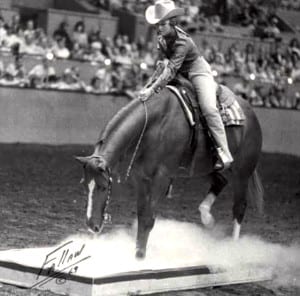 “We really just wore silverbelly hats back then,” said Cantleberry, who also showed on the west coast. (pictured left)
“We really just wore silverbelly hats back then,” said Cantleberry, who also showed on the west coast. (pictured left)
But as the 60s came to a close, a whole new style emerged, complete with colors.
Johne Dobbs, who showed AQHA in the midwest said see started seeing lots of colors, especially on youth kids during the early 70s. (pictured right)
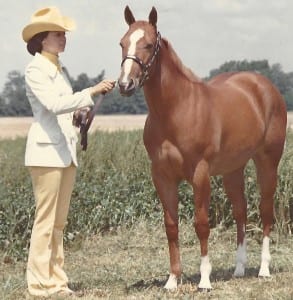 “I remember some people would even use colored chalk to color their light hats,” she said.
“I remember some people would even use colored chalk to color their light hats,” she said.
Robin Merrill of Texas also remembered a lot of color during the early 70s.
“I showed an Appy mare in this emerald green outfit where the hat and the chaps matched,” she said.
However, on the west side of the Rockies, and on the far east coast, colored hats didn’t become popular until much later.
Cantleberry said, “For women it was still a lot of silverbelly and white and men wore black hats.”
 Tina Karlen who spent this time showing in places like Massachusetts and Connecticut said, “If my memory serves me, the colored hats didn’t become popular until the late 70s. Feathers and full feather hat bands were also popular in the late 70s. Some people would even wear a big gaudy feather thing on the front or side of the hat. And the ‘taco’ shape was all the rage.” (pictured left)
Tina Karlen who spent this time showing in places like Massachusetts and Connecticut said, “If my memory serves me, the colored hats didn’t become popular until the late 70s. Feathers and full feather hat bands were also popular in the late 70s. Some people would even wear a big gaudy feather thing on the front or side of the hat. And the ‘taco’ shape was all the rage.” (pictured left)
Yes, the original “taco” hat (a style that has made a comeback in recent years minus the exceedingly high crown) was a product of the 70s. In fact, brims were a mere 3-3 ½” which was accentuated by crown heights up to 6” and hats were often shaped to be identical in both the front and the back. This all made for a rather, well, interesting look.
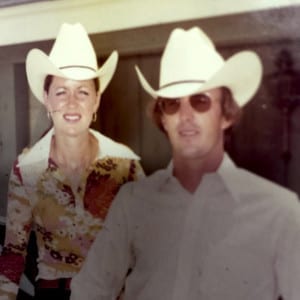 “I remember we used to actually cut brims at the shows, sometimes four or five a day” said Flanigan, “we called them ‘Snap Brim hats.’”
“I remember we used to actually cut brims at the shows, sometimes four or five a day” said Flanigan, “we called them ‘Snap Brim hats.’”
“I always thought it looked like your hat was on backwards when they would point the back to match the front,” Merrill chuckled.
Merrill also remembered the gaudy hat bands of the late 70s (and even early 80s) and shared that horsehair hat bands and thin leather bands on straw hats were fairly popular. Frank Merrill (pictured right here with wife, Robin) is wearing a thin leather band. Frank says he still has his and still wears it.
Here Come the 80s
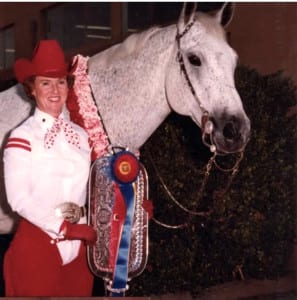 In the 80s, also known as the “Yuppie Decade”, “Reagan Decade” “Me-First Decade” or whatever you want to call it was ushered in, some styles of the 70s were ushered out.
In the 80s, also known as the “Yuppie Decade”, “Reagan Decade” “Me-First Decade” or whatever you want to call it was ushered in, some styles of the 70s were ushered out.
Everyone we spoke with remembers that colored hats began disappearing in the 80s, although no one really remembers exactly when. (pictured left)
“There was a time, sometime in the 80s for only a couple of years that these hats called Maxifelt hats were really popular,” recalled Flanigan, “they were wool hats, not the best quality, but they had felt hats in pretty much every color.”
 And while color may have been “out”, those high crowns remained somewhat popular until the mid 80s. (pictured right)
And while color may have been “out”, those high crowns remained somewhat popular until the mid 80s. (pictured right)
“Straw hats were also very popular in the summertime,” said Dobbs, “And youth kids were more neutral wearing only silverbelly or black hats.”
As you can see from the pictures, the sides were generally getting rather flat on felt hats by the late 80s and crowns were down to a standard 5”. Brims also widened a bit with the standard being 4”.
 The style of the late 80s on through the majority of the 90s didn’t change too much. Brims remained pretty low on the sides, with the “flattest” years being the mid 90s. (pictured left)
The style of the late 80s on through the majority of the 90s didn’t change too much. Brims remained pretty low on the sides, with the “flattest” years being the mid 90s. (pictured left)
There was more leeway with the front of the brim as some people still wore it a little more pointed while others chose a little squarer front. Straw hats also remained popular in the summer.
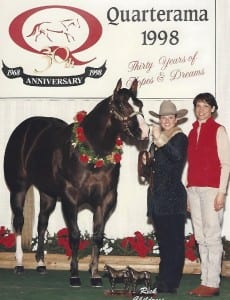 Merrill notes, however, that one big change during this time was seeing many more specialized hatters, especially at the big shows.
Merrill notes, however, that one big change during this time was seeing many more specialized hatters, especially at the big shows.
“Way back in the 60s and 70s, you just went to a Western store and bought a hat off the rack,” she said, “during the 90s you saw a lot more people having their hats professionally shaped.”
Colors remained rather neutral during the 90s, although Cantleberry recalled a lot more men ventured out from black or silverbelly to more “daring” colors like taupe and buckskin.
What Goes Around Comes Around… Almost
As is the name of the game with most fashion trends, the hat style of the 2000s and 2010s has somewhat returned to days of old.
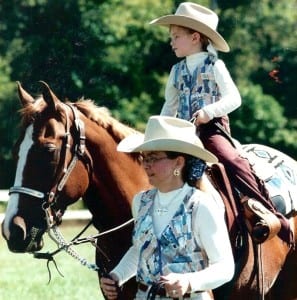 The general consensus was that square brims really started emerging in the year 2000, some call it the “shovel front” and by 2005 the “taco” sides saw a resurgence, although they have calmed down (somewhat) over the past couple of years. (pictured left)
The general consensus was that square brims really started emerging in the year 2000, some call it the “shovel front” and by 2005 the “taco” sides saw a resurgence, although they have calmed down (somewhat) over the past couple of years. (pictured left)
Embellished hats and hats with bound edges have also become increasingly popular and compared to the 80s crowns are down about another inch between 4-4.25”. Brims have remained a standard 4” although some are venturing to a wider 4.25” brim.
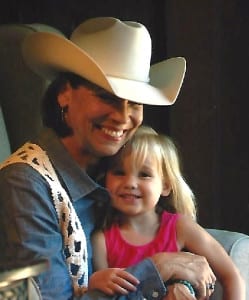 We have also witnessed a comeback in colored hats over the past couple of years.
We have also witnessed a comeback in colored hats over the past couple of years.
There is no doubt that each decade carries with it its own uniqueness and what will come next remains to be seen.
But no matter what the style, judges, exhibitors, and hatters all agree that a well-shaped hat is one of the most important investments an exhibitor can make.
CLICK HERE to see a slideshow of more styles from the 60s up to present day




